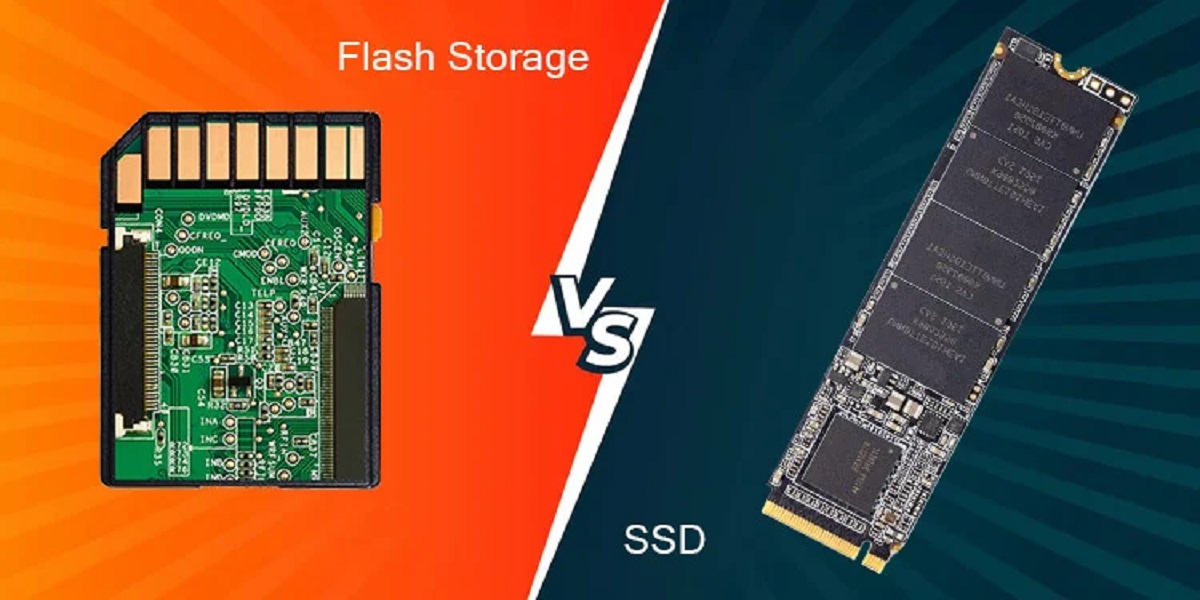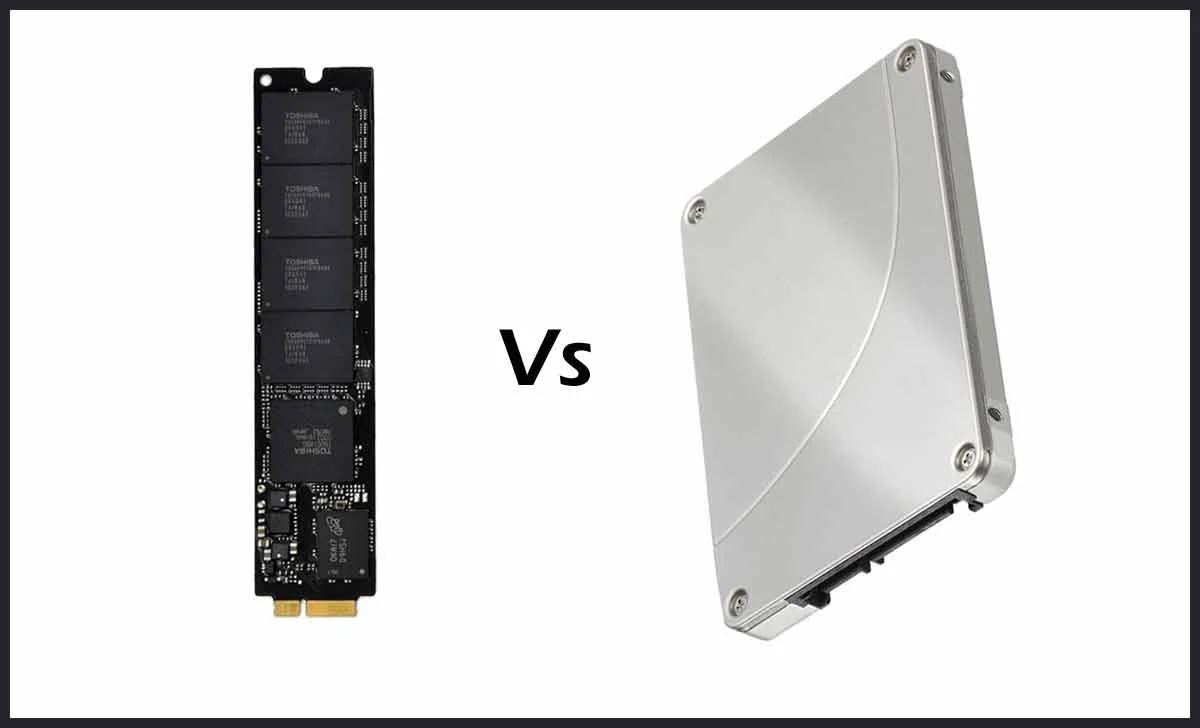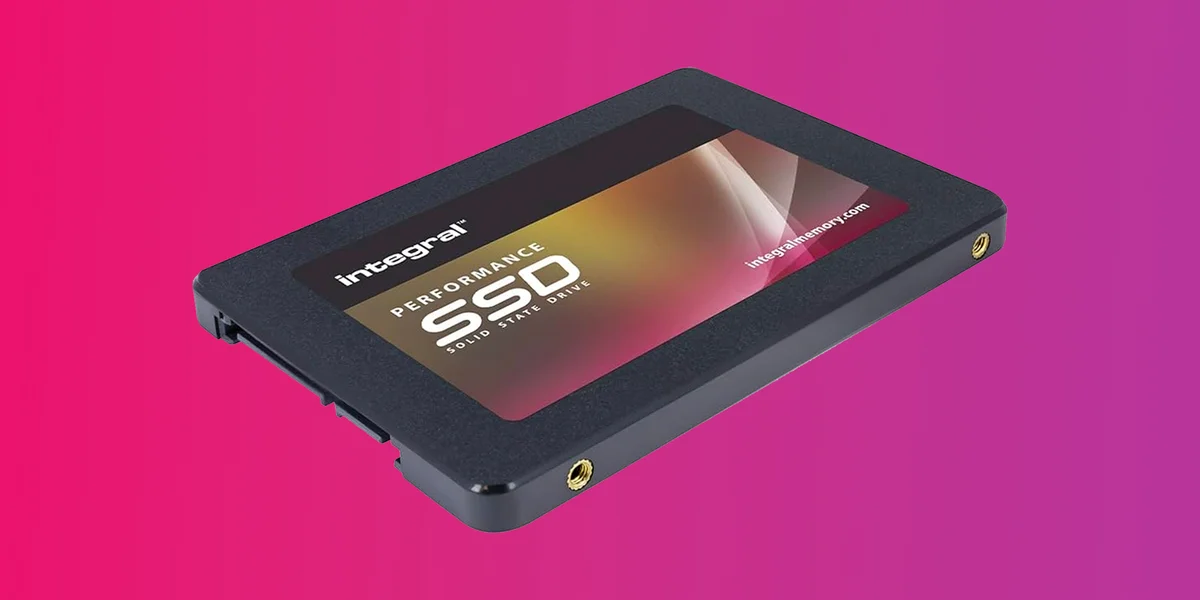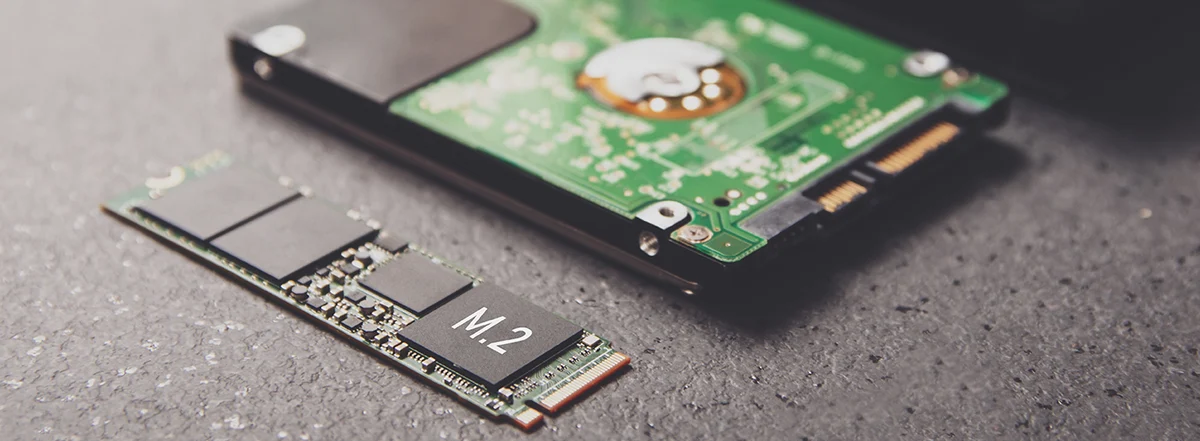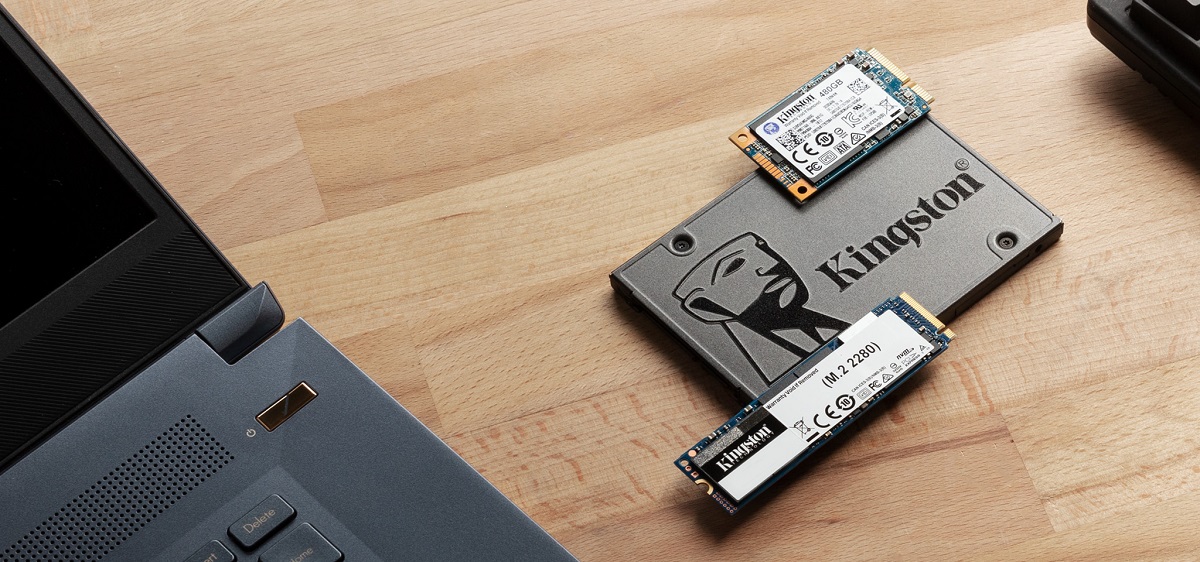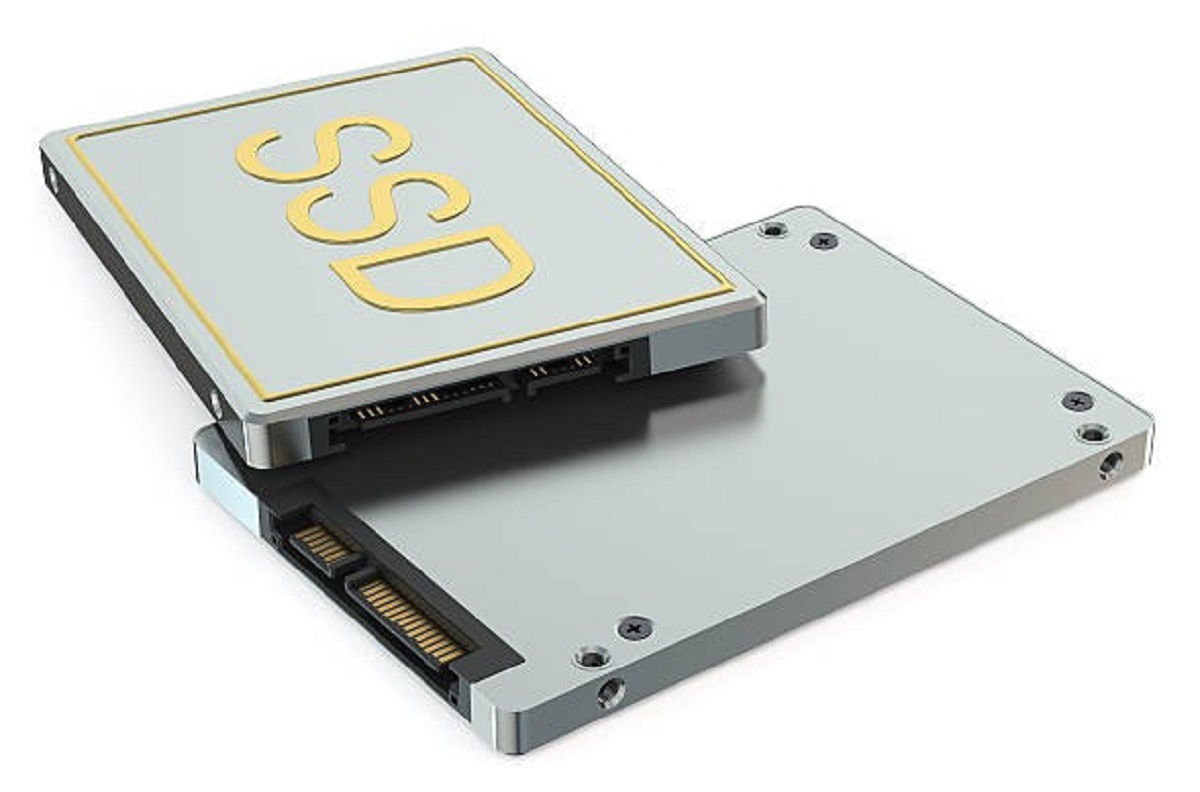Introduction
In today’s rapidly advancing technology landscape, storage solutions have become a crucial factor in determining the speed and efficiency of our digital endeavors. Two popular options in the world of storage devices are Solid State Drives (SSDs) and flash storage. Both of these technologies have revolutionized the way we store and access data, offering faster speeds, greater durability, and increased efficiency compared to their traditional hard disk drive counterparts.
In this article, we will explore the key differences between SSDs and flash storage, ultimately helping you make an informed decision when it comes to selecting the right storage solution for your needs. While SSDs and flash storage share some similarities, it is important to understand their unique characteristics and attributes to determine which option best suits your requirements.
Before delving into the specifics, let’s take a closer look at what SSDs and flash storage actually are. SSDs are a type of storage device that store data using flash memory, a non-volatile storage medium that retains data even when the power is turned off. On the other hand, flash storage refers to any storage technology that uses flash memory, encompassing a wide range of devices including SSDs, USB drives, memory cards, and more.
Now that we have a basic understanding of SSDs and flash storage, let’s delve deeper into their similarities and differences, exploring factors such as performance, reliability, cost, power consumption, and applications. By the end of this article, you will have a clear understanding of which storage solution is best suited for your specific needs.
Definition of Solid State Drive (SSD)
A Solid State Drive, commonly referred to as an SSD, is a storage device that utilizes non-volatile flash memory to store and retrieve data. Unlike traditional hard disk drives (HDDs), an SSD has no moving mechanical parts, which makes it more durable, energy-efficient, and significantly faster in terms of data access speeds.
SSDs are constructed with a collection of interconnected flash memory chips that retain data even when the power is turned off. This flash memory is organized into memory cells that can be electronically programmed and erased. The data is stored as electrical charges, with the absence of a charge representing a binary “0” and the presence of a charge representing a binary “1”. By manipulating these charges, the SSD can write, read, and erase data quickly and efficiently.
One of the key advantages of SSDs is their incredible speed. Compared to traditional HDDs, SSDs can deliver significantly faster data transfer rates and access times. This translates into reduced boot times, faster application loading, and improved overall system performance. Additionally, SSDs offer a lower latency and higher input/output operations per second (IOPS) compared to HDDs, resulting in a smoother and more responsive user experience.
Another important aspect of SSDs is their durability. Since there are no moving parts, SSDs are less susceptible to mechanical failure or damage caused by shock or vibration. This makes them an ideal choice for portable devices like laptops and tablets. SSDs also consume less power than HDDs, which not only helps extend battery life but also reduces heat generation.
SSDs come in various form factors, including 2.5-inch drives for desktops and laptops, M.2 drives for ultra-thin laptops and small form factor PCs, and PCIe-based drives for high-performance applications. They are available in different capacities ranging from a few hundred gigabytes (GB) to several terabytes (TB), allowing users to choose the size that suits their storage needs.
In summary, SSDs are storage devices that utilize non-volatile flash memory to store and retrieve data. They offer remarkable speed, improved durability, energy efficiency, and come in various form factors and capacities. With these benefits, SSDs have become the storage solution of choice for both consumers and professionals alike, revolutionizing the way we store and access data.
Definition of Flash Storage
Flash storage is a term that encompasses a wide range of storage devices and technologies that utilize flash memory to store and retrieve data. Flash memory is a type of non-volatile memory that retains data even when the power is turned off. Unlike traditional hard disk drives (HDDs) that rely on spinning disks and magnetic storage, flash storage offers several advantages including faster speeds, smaller form factors, and increased durability.
Flash storage can be found in various devices such as Solid State Drives (SSDs), USB flash drives, memory cards, and even smartphones. The technology behind flash storage involves memory cells that store data by trapping or releasing electrical charges. These cells are organized into pages and blocks, with each block being erased and rewritten as a whole. This process is known as “flash memory programming” and allows for quick and efficient data storage and retrieval.
One of the major benefits of flash storage is its superior speed compared to traditional HDDs. Flash storage can provide significantly faster data transfer rates and access times, resulting in quicker boot times, shorter application load times, and overall improved performance. This makes flash storage particularly well-suited for high-demand applications, such as data centers, where fast and reliable access to data is critical.
In terms of durability, flash storage outperforms HDDs due to the absence of moving mechanical parts. This means that flash storage devices are more resistant to shocks, vibrations, and physical wear and tear. Additionally, flash storage is not affected by magnetic fields, making it immune to data loss in magnetic environments. These characteristics make flash storage ideal for portable devices that require robust and reliable storage options.
Flash storage also offers the advantage of compact form factors. With advancements in technology, flash storage devices can be designed to take up minimal space. This is particularly advantageous for devices with limited physical size constraints, such as ultra-thin laptops, tablets, and smartphones. The smaller form factor allows for greater flexibility in device design and enables manufacturers to create sleek and lightweight products.
In summary, flash storage refers to a range of storage devices and technologies that utilize flash memory to store and retrieve data. It offers faster speeds, greater durability, and smaller form factors compared to traditional HDDs. With its superior performance and reliability, flash storage has become the go-to choice for various applications, ranging from personal devices to enterprise-level storage solutions.
The Similarities Between SSD and Flash Storage
While Solid State Drives (SSDs) and flash storage differ in certain aspects, they also share several similarities. These similarities contribute to the overall advantages offered by both storage technologies. Below, we will explore the key similarities between SSDs and flash storage.
First and foremost, both SSDs and flash storage utilize flash memory technology to store and retrieve data. Flash memory is a non-volatile storage medium that retains data even when the power is turned off. This shared foundation enables both SSDs and flash storage devices to offer fast access times and quick data transfer rates.
Another similarity is their lack of moving mechanical parts. Unlike traditional hard disk drives (HDDs) that have spinning disks, SSDs and flash storage devices do not rely on mechanical components to read or write data. This absence of moving parts contributes to their increased durability and reliability, as there are no components that can break or fail due to physical impact or wear and tear.
Both SSDs and flash storage are known for their low power consumption compared to HDDs. The absence of moving parts and the use of flash memory technology contribute to their energy efficiency. This energy efficiency not only extends battery life in portable devices but also reduces heat generation, which is beneficial for system performance and longevity.
Furthermore, SSDs and flash storage devices are available in various form factors and capacities. This flexibility allows users to choose the storage solution that best fits their needs and preferences. Whether it’s a compact M.2 SSD for a laptop or a high-capacity USB flash drive for file transfers, both SSDs and flash storage provide a range of options to cater to different storage requirements.
Lastly, both SSDs and flash storage offer faster boot times, improved application load times, and overall enhanced system performance compared to traditional HDDs. The inherent nature of flash memory technology, combined with the lack of mechanical limitations, enables SSDs and flash storage devices to deliver superior speeds and responsiveness.
In summary, SSDs and flash storage share several similarities, including the use of flash memory, the absence of moving mechanical parts, low power consumption, versatility in form factors and capacities, and improved performance compared to HDDs. These shared characteristics make both storage technologies highly desirable for a wide range of applications, from personal computing devices to enterprise-level storage solutions.
The Differences Between SSD and Flash Storage
While Solid State Drives (SSDs) and flash storage have similarities, they also possess distinct differences that set them apart. Understanding these differences is crucial in determining the right storage solution for your specific needs. Let’s explore the key differences between SSDs and flash storage.
One primary difference is the form factor and user accessibility. SSDs are commonly used as internal storage devices in computers and laptops. They often come in a 2.5-inch form factor and use standardized interfaces like SATA or PCIe for connectivity. This makes them compatible with existing storage interfaces and easily replaceable in most systems. Flash storage, on the other hand, encompasses a wider range of devices, including USB flash drives, memory cards, and portable SSDs. These devices are typically smaller in size and offer more versatility for external storage and data transfer.
Another significant difference lies in the level of performance. While both SSDs and flash storage offer faster speeds compared to traditional hard disk drives (HDDs), SSDs generally outperform flash storage in terms of data transfer rates and response times. SSDs often utilize advanced controller technologies and higher-grade flash memory to deliver exceptional performance, making them ideal for applications that demand maximum speed and responsiveness, such as gaming or video editing.
Reliability is also a distinguishing factor between SSDs and flash storage devices. SSDs tend to have better overall reliability compared to flash storage. This is attributed to the fact that SSDs undergo rigorous testing and often feature advanced error correction mechanisms and wear-leveling algorithms to enhance the longevity of the drive. Flash storage devices, while still reliable, may not possess the same level of durability and longevity as SSDs, especially in scenarios involving frequent writes or extensive usage.
Cost is another factor to consider when comparing SSDs and flash storage. In general, SSDs are more expensive than flash storage devices in terms of cost per gigabyte. This price difference is primarily due to the higher production costs associated with manufacturing SSDs, especially those featuring high-capacity and high-performance specifications. On the other hand, flash storage devices like USB flash drives and memory cards tend to be more affordable and offer a cost-effective solution for basic storage needs.
Finally, it’s essential to consider the intended application when choosing between SSDs and flash storage. SSDs are well-suited for applications that require fast and reliable storage, such as gaming, multimedia production, and database management. Flash storage devices, including USB flash drives and memory cards, are popular choices for portable storage and data transfer between devices like cameras, smartphones, and computers.
In summary, SSDs and flash storage exhibit differences in form factor, performance, reliability, cost, and application suitability. SSDs excel in terms of performance and reliability, making them the preferred choice for demanding applications. Flash storage, on the other hand, offers a more budget-friendly solution and is well-suited for portable storage and basic data transfer needs.
Performance
When comparing performance, both Solid State Drives (SSDs) and flash storage devices offer significant advantages over traditional hard disk drives (HDDs). However, there are differences in performance within the SSD and flash storage categories themselves.
SSDs are known for their exceptional performance, delivering significantly faster data transfer rates and access times compared to HDDs. This is primarily due to the absence of mechanical components and the use of flash memory technology, which allows for near-instantaneous data access. With read and write speeds that can reach several gigabytes per second, SSDs provide a dramatic improvement in overall system responsiveness, enabling faster boot times, quicker application loading, and accelerated file transfers.
Within the SSD category, performance can vary based on several factors. Higher-end SSDs often feature advanced controller technologies and more robust flash memory, increasing their overall performance capabilities. These high-performance SSDs are designed for demanding workloads such as gaming, video editing, and professional content creation, where fast and reliable storage is crucial. They offer even faster data transfer rates, lower latency, and higher input/output operations per second (IOPS), resulting in a smoother and more responsive user experience.
Flash storage devices, such as USB flash drives and memory cards, generally offer lower performance compared to SSDs. While they still offer considerably faster speeds compared to HDDs, they are not designed to match the same level of performance as SSDs. Flash storage devices are typically optimized for portability, convenience, and ease of use, making them ideal for data transfer between devices or storing personal files. They excel in situations where speed is not the primary concern, but rather portability and accessibility play a more significant role.
It’s important to note that performance can also be influenced by the interface used for connecting the storage device. SSDs often utilize faster interfaces such as SATA (Serial Advanced Technology Attachment) or PCIe (Peripheral Component Interconnect Express) to take full advantage of their high-performance capabilities. Flash storage devices, on the other hand, may utilize interfaces like USB or SD (Secure Digital) depending on the device type. The interface plays a crucial role in determining the maximum data transfer rates achievable by the device.
In summary, SSDs offer exceptional performance with significantly faster data transfer rates and access times compared to HDDs. Within the SSD category, higher-end models offer even better performance for demanding applications. Flash storage devices, while not matching the same level of performance as SSDs, still provide faster speeds than HDDs and are optimized for portability and convenience.
Reliability
Reliability is a key consideration when choosing between Solid State Drives (SSDs) and flash storage devices. Both options offer higher reliability compared to traditional hard disk drives (HDDs) due to the absence of moving mechanical parts. However, there are distinctions in terms of reliability within the SSD and flash storage categories.
SSDs are generally considered to be highly reliable storage devices. Their lack of moving parts significantly reduces the risk of mechanical failure. This means that SSDs are less susceptible to damage caused by physical shock, vibration, or accidental drops. Additionally, SSDs often feature advanced error correction mechanisms and wear-leveling algorithms to increase their longevity. These technologies help to prolong the lifespan of the drive and ensure the integrity of stored data, making them suitable for critical applications where data integrity is paramount.
Furthermore, SSDs are not affected by magnetic fields, which can pose a risk to data integrity in traditional HDDs. With SSDs, there is minimal risk of data loss due to environmental factors. This makes them well-suited for applications in magnetic-sensitive environments, such as medical equipment or data centers with strong magnetic fields.
Within the SSD category, there can be variations in reliability due to differences in manufacturing quality and component choices. Higher-end SSDs often undergo more rigorous testing and use higher-grade components, resulting in increased reliability. These SSDs typically come with longer warranty periods and higher endurance ratings, indicating their ability to withstand a higher number of read and write cycles without experiencing degradation in performance or data loss.
Flash storage devices, such as USB flash drives and memory cards, also offer reliability advantages over traditional HDDs. However, they may not possess the same level of longevity and endurance as SSDs. The nature of flash memory technology itself introduces limited write cycles, which means that excessive or intensive writing operations can wear out the memory cells over time. As a result, regular backups and careful management of data can help prolong the lifespan and maintain the reliability of flash storage devices.
It’s worth noting that the reliability of flash storage devices can vary depending on factors such as the quality of the flash memory used and the manufacturing process. Higher-quality flash storage devices from reputable manufacturers generally offer greater reliability, as they undergo stricter quality control processes and use advanced technologies to ensure data integrity and durability.
In summary, both SSDs and flash storage devices provide improved reliability compared to traditional HDDs. SSDs, in general, offer higher reliability due to their advanced error correction mechanisms, wear-leveling algorithms, and resistance to mechanical failure and magnetic fields. Flash storage devices offer good reliability, but their lifespan and endurance may be lower than SSDs due to the nature of flash memory technology. Selecting high-quality SSDs or flash storage devices from reliable manufacturers is crucial for maximizing reliability and ensuring the safe storage of your valuable data.
Cost
Cost is an important factor to consider when choosing between Solid State Drives (SSDs) and flash storage devices. While both options offer advantages over traditional hard disk drives (HDDs), there are differences in terms of cost within the SSD and flash storage categories.
SSDs tend to be more expensive compared to flash storage devices in terms of cost per gigabyte. This price difference is primarily due to the higher production costs associated with manufacturing SSDs. SSDs often utilize more advanced controller technologies, higher-grade flash memory, and undergo more rigorous testing to ensure their reliability and performance. These factors contribute to their higher price tag compared to flash storage devices.
However, it’s important to consider the value that SSDs provide in terms of their performance and durability. SSDs deliver significantly faster data transfer rates, quicker response times, and overall improved system performance compared to HDDs. They also offer enhanced durability, with the absence of mechanical parts reducing the risk of damage caused by physical impact or vibration. So while SSDs may have a higher upfront cost, they can provide a substantial return on investment through improved productivity and long-term reliability.
Flash storage devices, on the other hand, such as USB flash drives and memory cards, tend to be more cost-effective compared to SSDs. They offer affordable storage solutions with a range of capacities to suit different needs. Flash storage devices are particularly suitable for basic storage requirements and scenarios where high-performance storage is not a primary concern. They provide a convenient and portable way to store and transfer data, making them popular options for everyday use and casual users.
It’s worth mentioning that the cost of flash storage devices can vary depending on factors such as the brand, capacity, and specific features. Higher-capacity flash storage devices or those with additional features such as waterproofing or advanced data encryption may come with a higher price tag. As with any storage device, it is important to balance your storage needs with your budget when making a purchasing decision.
Additionally, price fluctuations in the market and advancements in technology can impact the cost of both SSDs and flash storage devices. Over time, advancements in manufacturing processes and increased production volumes can lead to cost reductions for both options.
In summary, SSDs tend to be more expensive compared to flash storage devices, primarily due to their higher performance and reliability. However, the increased upfront cost of SSDs is justified by the substantial performance improvements they offer, making them a valuable investment for users who require fast and reliable storage. Flash storage devices are more cost-effective and provide affordable storage solutions, making them suitable for basic storage needs and casual users.
Power Consumption
When considering power consumption, both Solid State Drives (SSDs) and flash storage devices offer advantages over traditional hard disk drives (HDDs). However, there are differences in power consumption within the SSD and flash storage categories.
SSDs are known for their low power consumption. Since SSDs do not have mechanical parts that need to spin and move, they require significantly less power compared to HDDs. This lower power consumption translates into several benefits. For portable devices such as laptops and tablets, SSDs help extend battery life, allowing users to work or browse longer without needing to recharge. Additionally, lower power consumption reduces heat generation, resulting in cooler operation and potentially improving overall system stability and reliability.
Furthermore, SSDs feature advanced power management technologies that optimize power usage based on workload and usage patterns. These technologies enable the drive to enter sleep or idle modes when not in use, consuming minimal power and maximizing energy efficiency. This feature is particularly advantageous for mobile devices where power efficiency is crucial to ensure optimal battery performance.
Flash storage devices also offer low power consumption, making them a suitable option for portable and low-power devices. USB flash drives, for example, utilize flash memory technology that requires minimal power to write or read data. Similarly, memory cards used in devices such as cameras or smartphones consume minimal power when capturing or accessing stored data.
It’s important to note that power consumption can vary within SSDs and flash storage devices due to different implementations and power management options. Higher-performance SSDs may consume slightly more power due to the increased processing and data transfer capabilities. Similarly, certain flash storage devices may offer additional features, such as built-in encryption or wireless connectivity, that may slightly increase power consumption during operation.
When comparing power consumption between SSDs and flash storage devices, SSDs generally consume slightly more power than flash storage devices due to their advanced controller technology and additional processing capabilities. However, the difference in power consumption is usually minimal and may not be significant in practical terms.
In summary, both SSDs and flash storage devices offer low power consumption compared to traditional HDDs. SSDs are known for their energy efficiency, contributing to extended battery life in portable devices and reduced heat generation. Flash storage devices, like USB flash drives and memory cards, also consume minimal power, making them suitable for low-power devices and on-the-go data storage. While there may be slight variations in power consumption within the categories, both SSDs and flash storage devices provide power-efficient storage options.
Applications
When it comes to applications, both Solid State Drives (SSDs) and flash storage devices offer benefits and are well-suited for specific use cases. Understanding these applications can help you make an informed decision regarding which storage solution is appropriate for your needs.
SSDs are widely used in various applications where speed, reliability, and performance are crucial. One major application is in personal computers, both desktops and laptops, where SSDs can significantly improve overall system responsiveness, reduce boot times, and enhance the performance of resource-intensive tasks like gaming or multimedia editing. SSDs also find extensive usage in data centers, as they can handle the high demands of server workloads and database management with faster read and write speeds and higher input/output operations per second (IOPS).
In addition, SSDs are favored in professional environments, such as video editing or content creation studios, where the ability to quickly access and transfer large multimedia files is vital. The speed and reliability of SSDs also make them suitable for industrial applications that require rugged and durable storage solutions, such as surveillance systems or embedded systems in rugged environments.
On the other hand, flash storage devices like USB flash drives and memory cards excel in applications that prioritize portability and ease of use. These devices are commonly used for data transfer and storage for various purposes. USB flash drives are ideal for carrying files, documents, and multimedia content, making them convenient for students, professionals, and individuals on the go. They can also serve as a backup or temporary storage solution for files or software installations.
Memory cards, commonly used in cameras, smartphones, and other portable devices, offer expandable storage options for capturing photos, videos, and other digital media. They provide a removable and portable solution for additional storage capacity, allowing users to easily transfer files between devices. Memory cards also find applications in areas such as home automation, where they can store data for smart devices or function as storage for embedded systems in cars or IoT devices.
It’s worth mentioning that the versatility of flash storage devices extends beyond personal and professional applications. They are commonly used in gaming consoles, car entertainment systems, and various consumer electronics that require reliable storage solutions in a compact form factor. Flash storage devices are also popular for distributing software or firmware updates, as they offer a cost-effective and portable means of delivering large files.
In summary, SSDs are well-suited for applications requiring high speed, durability, and reliability, such as personal computers, data centers, professional content creation, and industrial environments. Flash storage devices, including USB flash drives and memory cards, excel in portable storage and data transfer applications, serving as convenient solutions for individuals on the go, photographers, and various consumer electronics use cases.
Conclusion
When it comes to choosing between Solid State Drives (SSDs) and flash storage devices, understanding the differences and similarities is crucial in making an informed decision. Both options offer significant advantages over traditional hard disk drives (HDDs), such as faster speeds, improved reliability, and lower power consumption.
SSDs, with their advanced flash memory technology and lack of mechanical parts, provide unparalleled performance and durability. They excel in applications that require high-speed storage solutions, such as gaming, multimedia editing, and data centers. Despite their higher cost, SSDs offer a remarkable return on investment through enhanced productivity and improved system responsiveness.
Flash storage devices, including USB flash drives and memory cards, provide affordable and portable storage options. They are well-suited for basic storage needs and data transfer between devices, making them convenient for everyday use and on-the-go usage. Flash storage devices offer cost-effectiveness and versatility, serving as a popular choice among casual users and in various consumer electronics applications.
Both SSDs and flash storage devices have their unique strengths and applications. SSDs offer top-notch performance and reliability, making them suitable for users requiring fast and reliable storage solutions. Flash storage devices prioritize portability and ease of use, catering to individuals on the go and those needing convenient storage for basic needs.
Ultimately, the choice between SSDs and flash storage devices depends on your specific requirements, budget, and the intended usage scenario. Assessing factors such as performance, reliability, cost, power consumption, and applications will help guide your decision-making process. It’s also crucial to consider the capacity needs, available interfaces, and brand reputation. Consulting with professionals or conducting thorough research can further aid in making the best choice.
With the ever-evolving technology landscape, both SSDs and flash storage devices continue to push the boundaries of storage capabilities. Whether you prioritize high performance or portable convenience, both options offer significant advancements over traditional HDDs and contribute to the seamless storage and access of your valuable data.







